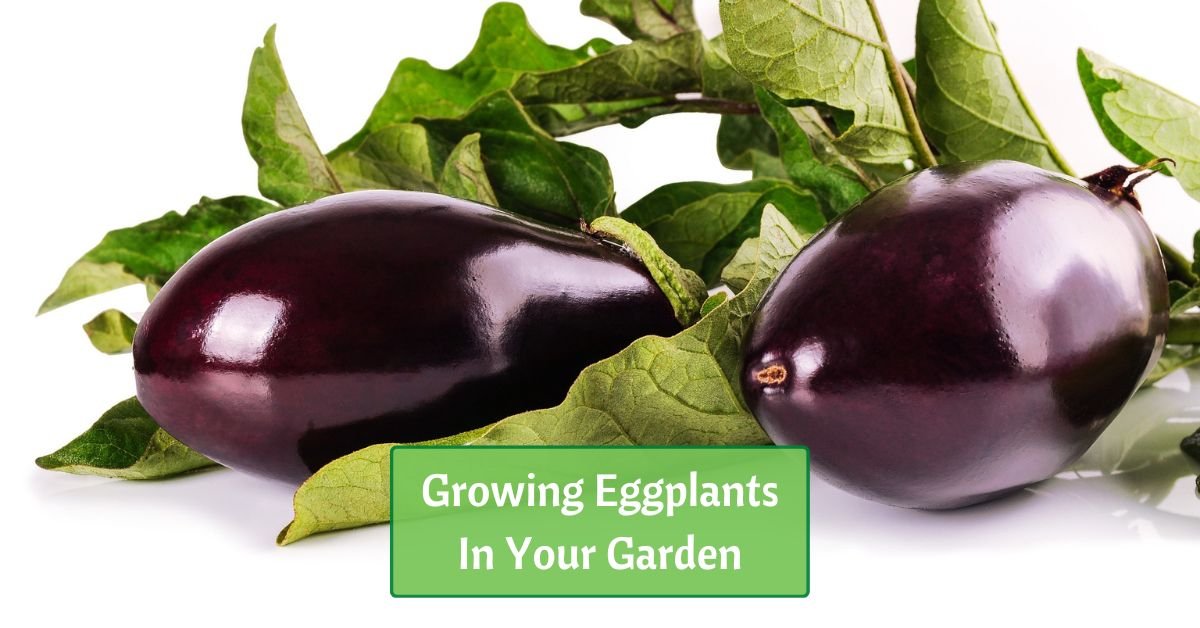Eggplants, also known as aubergines or brinjals in some parts of the world, can be a rewarding addition to your garden. In this guide, we’ll walk you through growing eggplants, from planting the seeds to harvesting these glossy, purple beauties.
Understanding Eggplant
Eggplants belong to the nightshade family (Solanaceae) and are closely related to tomatoes and peppers. They are native to South Asia and have been cultivated for centuries.
The name “eggplant”- common in North America – originates from a variety of this vegetable with small, white, egg-shaped fruits. The most common eggplant is purple but there are also white, green, and even striped varieties.
Selecting the Right Eggplant Variety
Before you begin growing eggplants, you have to choose the right variety for your garden. Popular choices include the classic ‘Black Beauty,’ ‘Gretel’ for white eggplants, and ‘Listada de Gandia’ for a unique striped appearance.
Have you only ever tried one kind of eggplant? This is a great chance to experiment and grow some new types!
All eggplant varieties grow on somewhat large plants. They can reach 2 to 4 feet high, and the same size across. Because of that, they may need support as they grow – we’ll come back to that later!
Preparing the Soil
Eggplants thrive in well-drained, fertile soil. Start by ensuring your garden soil is free of rocks and debris. Aim for a soil pH level between 6.0 and 6.8 – slightly acidic to neutral. You can test your soil’s pH using a kit and make any necessary adjustments using lime or sulfur. Enhance your soil’s fertility by incorporating organic matter like compost. This also improves drainage and overall soil structure.
Order Eggplant Seeds Online
Planting Eggplants
Eggplant can be grown from seeds. Sow them indoors 8-10 weeks before the last expected frost date in your region. Plant the seeds in pots or trays, covering them with about 1/4 inch of soil.
Once the seedlings have grown several inches tall and the risk of frost has passed, transplant them into your garden. Space the plants 18-24 inches apart in rows 24-36 inches apart.
Sunlight and Location
Eggplants thrive in full sun. Choose a location that gets at least 6-8 hours of direct sunlight each day. Proper sunlight is essential for healthy growth and the development of plentiful fruit.
Watering and Fertilizing
Watering and fertilizing are critical aspects of eggplant care.
Keep the soil moist but avoid overwatering, which could lead to root rot. Mulching around the plants can help retain moisture and suppress weeds.
Regular fertilization benefits eggplants. Before planting, work a balanced, slow-release fertilizer into the soil. Once the plants are established and have begun to flower, you can side-dress them with additional fertilizer, following package instructions to avoid overfeeding.
Care and Maintenance
To ensure successful eggplant growth, consider the following care and maintenance tips:
Pruning
Regularly remove the lower leaves of your eggplant plants as they grow. This helps improve air circulation and reduces the risk of diseases.
Support
As eggplants grow, they may become top-heavy with fruit. Providing support, such as stakes or cages, can prevent the plants from bending or breaking under the weight.
Pest and Disease Management
Watch your eggplants for common pests like aphids, flea beetles, and tomato hornworms. Early detection and intervention are key to managing these pests. Consider using organic pest control methods or introducing beneficial insects to help keep them in check.
Harvesting Eggplants
Eggplants are typically ready for harvest 60-85 days after transplanting them outdoors. Overall, that means it takes them six months or more to produce ripe vegetables! The range depends on the variety and growing conditions.
To determine if your eggplants are ready, look for fruits that are glossy and firm to the touch. Gently press the skin with your thumb; if it leaves an indentation, the eggplant is ripe.
Use a sharp knife or pruning shears to cut the fruit from the plant, leaving a small portion of the stem attached.
One plant in a home garden can yield around 4 or 8 eggplants in a season. Again, though, it depends on the variety and achieving optimal conditions.
Post-Harvest Care
After harvesting your eggplants, handle them with care to maintain their quality. Store them in a cool, dry place, such as your refrigerator’s crisper drawer, and use them within a week or two for the best flavor and texture.
Growing eggplants in your garden can be a gratifying experience, offering a versatile and delicious vegetable for your culinary endeavors. By selecting the right variety, preparing your soil, providing proper care, and harvesting at the right time, you can enjoy the flavors of your homegrown eggplants. So, start planting, nurture your eggplants, and look forward to savoring the unique taste of these glossy purple gems from your own garden. Happy gardening!










